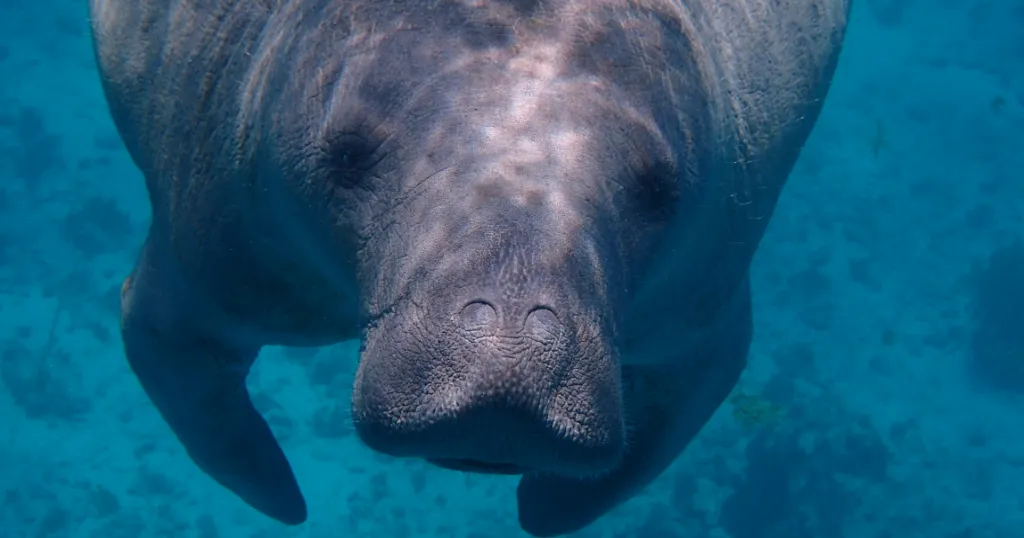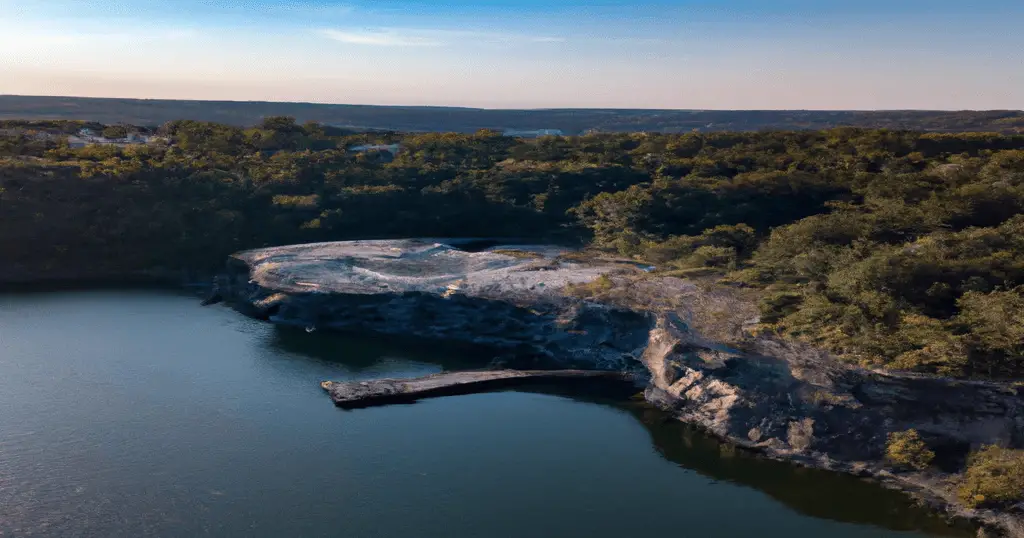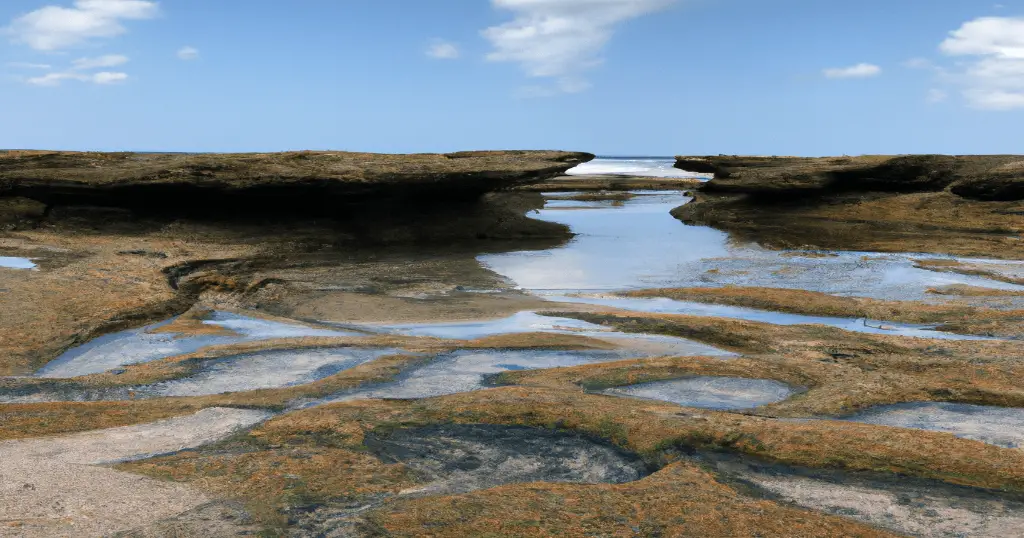Embarking on a road trip to Florida opens up a world of natural wonders and captivating wildlife encounters. Among the many treasures waiting to be discovered, manatees hold a special place in the hearts of nature enthusiasts.
In this article, we will guide you through the best manatee spotting locations in or near West Palm Beach, that we’ve encountered during our adventure.
The following map shows the 7 locations we will talk about in this article. Not all of them are close by, but all of them are worth the drive!
1. Manatee Lagoon
Manatee Lagoon, located around 5 miles north of downtown West Palm Beach, is a prime location for spotting these gentle giants. This unique eco-discovery center was opened in 2016 and is stationed beside the Riviera Beach Next Generation Clean Energy Center. Here, manatees are known to assemble during the winter months, drawn by the warm water outflows from the power plant that merge with the Lake Worth Lagoon.
With free admission, Manatee Lagoon is a highly accessible attraction for all ages and boasts an impressive two-story facility. The expansive wraparound decks offer visitors unobstructed views of manatees and the lagoon’s other aquatic inhabitants. This family-friendly site even provides a live “manatee cam” so that enthusiasts can check the manatee count before visiting.
The location offers more than manatee spotting. The clear waters and beautiful views of Peanut Island make it an ideal locale for casual sightseeing. Visitors can also learn more about the local environment through interactive exhibits and educational displays about this once-endangered species. Unique offerings on their schedule include outdoor yoga classes and Manatee Tales Story Time for children, promoting both education and enjoyment of Florida’s wildlife.
Picnic pavilions are situated along a long deck that extends from the seawall, providing the perfect vantage point to watch the action at nearby Peanut Island and the Port of Palm Beach. Whether you’re an environmental enthusiast or simply seeking a peaceful spot to unwind, Manatee Lagoon offers an enriching experience.
To get there, take the entrance on Flagler Dr. via 58th St., which is located east of U.S. 1 and south of the Port of Palm Beach flyover. For more information, visit www.visitmanateelagoon.com.
2. John D. MacArthur Beach State Park
John D. MacArthur Beach State Park, situated approximately 10 miles north of downtown West Palm Beach, is a secluded spot for nature enthusiasts and those seeking solace away from bustling crowds. The park spans the northern end of Singer Island, encompassing 2 miles of beach and a vibrant subtropical coastal habitat. Here, manatees occasionally make their appearance, delighting park-goers with their serene presence.
As one of the few undisturbed natural treasures in South Florida, the park offers a range of outdoor activities. From kayaking through tranquil waters, snorkeling around natural reefs, bird-watching, to fishing and hiking, it caters to different interests. You might even be lucky enough to spot a manatee during your exploration.
Adding to the allure of the park is the 4,000-square-foot nature center, which houses aquariums and exhibits displaying local flora and fauna. The center also organizes a plethora of monthly activities like surfing clinics, art lessons, live bluegrass music, and guided sea turtle walks at night during the season.
Daily nature walks, commencing at 10 am, provide an immersive experience of the park’s biodiversity. As activities and costs may vary, it is advisable to check their website at www.macarthurbeach.org for accurate information.
The park facilities include water sports amenities, parking (for a fee), restrooms, and showers. Parking costs $5, while bicyclists and pedestrians are charged $2. Its tranquil ambience, coupled with its rich natural beauty, makes John D. MacArthur Beach State Park an ideal spot for swimming, walking, solitude, and even surfing. The park’s location is at 10900 Jack Nicklaus Dr., North Palm Beach.
3. Keylypso of The Palm Beaches Snorkel Charters
Keylypso of The Palm Beaches Snorkel Charters offers a unique and intimate way to spot manatees in their natural habitat. Located about 8 miles north of downtown West Palm Beach at Lake Park Marina, Keylypso offers guided tours under the supervision of U.S. Coast Guard-certified captains, ensuring a safe and informative experience for novice and experienced snorkelers alike.
The 34-foot power catamaran takes guests on a scenic cruise through Lake Worth Lagoon to various local snorkeling spots. This approach offers an unparalleled opportunity to encounter manatees in areas only accessible by boat, allowing for a peaceful and crowd-free interaction with these majestic creatures.
The charter equips participants with all necessary snorkeling gear, including a mask, fins, snorkel, and vest. If you wish to immortalize your manatee encounter, underwater cameras are available for purchase.
4. Cato’s Bridge
Situated roughly 18 miles north of downtown West Palm Beach, Cato’s Bridge is a beloved local spot renowned for its crystal-clear waters and frequent manatee sightings. This popular area attracts swimmers, snorkelers, and stand-up paddleboarders alike due to its perpetual clear water views and tranquil surroundings.
Manatees are drawn to this area due to the freshwater outflow of the Loxahatchee River into Jupiter Inlet, making it an excellent location for potential sightings. The beauty of Cato’s Bridge lies in its accessibility; whether you’re in the water or standing on the sandy shore, manatees can often be clearly seen as they swim in the shallow waters.
For those intending to snorkel, remember to follow local laws and safety guidelines, which require the use of a dive flag due to the area’s boat traffic. However, if you prefer to stay dry, the area is just as enjoyable on foot, offering a naturalistic Florida experience that leaves a lasting impression.
Cato’s Bridge is more than just a manatee spotting location; it’s a place where you can immerse yourself in Florida’s natural beauty and engage with wildlife in a respectful and peaceful manner. It truly offers a genuine Floridian experience.
5. Jonathan Dickinson State Park
Jonathan Dickinson State Park, located approximately 25 miles north of downtown West Palm Beach, is a serene sanctuary that provides a slice of “oldschool” Florida before urban development. The park spans over 11,000 acres of diverse terrain and is home to numerous species, including the endangered gopher tortoise and the gentle manatee.
One of the park’s unique features is Hobe Mountain, an ancient dune topped with a tower that offers panoramic views of the park and the Intracoastal Waterway. The Loxahatchee River, designated a National Wild and Scenic River, courses through the park, becoming a favorite dwelling for manatees during winter and alligators throughout the year. Daily two-hour boat tours and kayak rentals provide an ideal opportunity to observe these creatures and the park’s rich biodiversity.
After a three-decade absence, horseback riding has been reintroduced as a recreational activity. Visitors can also take advantage of a variety of amenities, including newly renovated cabins for rent, tent sites, bicycle and hiking trails, two established campgrounds, some primitive campgrounds, and a snack bar. The recently opened food-and-beverage garden, Palmettos on the Loxahatchee, features local foods, wine, and beer, adding a touch of gourmet to the outdoor experience.
The Elsa Kimbell Environmental Education and Research Center, equipped with interactive displays and exhibits, offers further insight into the area’s natural history. For birdwatchers, the park is a veritable paradise, home to approximately 150 species.
For more information, visit www.floridastateparks.org/jonathandickinson. Vehicles are charged a $6 fee, while bicyclists and pedestrians are charged $2.
6. Jensen Beach
Jensen Beach, located approximately 35 miles north of downtown West Palm Beach and just 10 miles north of Hobe Sound, is an unspoiled coastal gem nestled between the charming town of Stuart and the bustling city of Fort Pierce. The area, including Stuart, straddles the Indian River and occupies Hutchinson Island, a barrier island that extends into Fort Pierce.
Jensen Beach and its surrounding areas offer an array of natural beauty, from its pristine Atlantic beaches – a favored nesting spot for turtles from late April through August – to its substantial shoreline along the St. Lucie River. Nearby, in Port Salerno, you’ll find the Manatee Pocket, a tranquil waterfront area located just a short distance from the St. Lucie Inlet.
While it has seen some development with a few high-rises appearing along the shore, the local residents have made concerted efforts to maintain the area’s natural charm and prevent commercial overcrowding. This thoughtful approach to development has preserved the area’s appeal, making it a perfect setting for potential manatee spotting and an idyllic escape from the urban sprawl.
To reach Jensen Beach from Jupiter or Hobe Sound, simply drive north on Federal Highway (U.S. 1). Route A1A cuts through downtown Stuart and continues throughout Hutchinson Island, with Route 707 running parallel on the mainland directly across the tidal lagoon. Whether you’re a nature lover, an adventurer, or simply seeking a peaceful retreat, Jensen Beach offers a unique blend of natural beauty and relaxed coastal living.
7. Florida Oceanographic Coastal Center at Stuart Beach
Just 40 miles north of downtown West Palm Beach, the Florida Oceanographic Coastal Center at Stuart Beach offers an immersive marine experience that aligns with its mission “to inspire environmental stewardship of Florida’s coastal ecosystems through education and research.” The center is not only a location for potential manatee sightings but also a hub for understanding Florida’s rich marine ecosystem.
A visit to the center can include petting and feeding stingrays at designated times, as well as participating in the morning sea turtle program which introduces visitors to the center’s three permanent residents. The center’s highlight is the “feeding frenzy,” a must-see event where food is tossed into a massive 750,000-gallon lagoon tank causing sharks, tarpon, and snook to swarm the surface.
For those who prefer land-based activities, the center offers a 1-mile guided walk through coastal hardwood hammock and mangrove swamp habitats. Visitors can explore these trails independently as well, which offers the opportunity to spot not only manatees but dolphins as they pass by.
- The Florida Oceanographic Coastal Center is located at 890 N.E. Ocean Blvd., Stuart.
- More information is available at www.floridaocean.org
- Admission is $12, providing an affordable way to immerse yourself in Florida’s fascinating coastal ecosystems
What is the best time to see manatees in Florida?
They can be seen year-round in the state, but ideally, you want to look for them between November and March.
Manatees are large, slow-moving, but migratory marine mammals. They are cold-sensitive and prefer waters that are about 68 to 72 degrees Fahrenheit. When the sea temperature drops in the Gulf of Mexico drops below this range, typically in the winter months, they migrate to warmer waters. As Florida has an extensive network of springs that stay around 72 degrees all year round, this makes the state a popular wintering spot for manatees.
The best time of day to spot them
The best time of day to see manatees is usually early in the morning, right after sunrise. This is the time when they are typically most active. During these hours, manatees are often grazing on seagrass beds, which makes them easier to spot.
Midday can also be a good time for viewing, particularly during the winter months, as manatees will often surface to warm themselves in the sun. However, the specific timing can vary based on the weather, the tide, and the location.
Mating season can be spectacular.
Manatee mating season typically runs from April through October, although it can sometimes extend outside these months. During this time, it is rare to see Manatees in Florida, but if you do spot them, it will likely be an entire “mating herd”.
A mating herd is a group of manatees consisting of a single female, or cow, and multiple males, or bulls, that follow her around trying to mate. Mating herds can have a dozen or more males vying for the attention of one female, and the group can sometimes become quite animated and splash around, making for a spectacular sight.
Tips for swimming with manatees
Many of the places where you can see manatees also allow you to swim with them. However, with great joy comes great responsibility. Here are some tips to make the most out of this unique experience:
- Book a Guided Tour: Consider attending a guided tour from a reputable operator who is familiar with the regulations and best practices for swimming with manatees.
- Keep Your Distance: Always remember to keep a respectful distance from the manatees. Try not to approach them, but rather let them approach you if they are curious. Maintain at least six feet of distance to give them enough space to move freely.
- No Touching or Feeding: The Florida Manatee Sanctuary Act of 1978 makes it illegal to disturb manatees in any way. Also, don’t touch or feed them. If a manatee approaches you, resist the urge to reach out and touch it. Always keep your hands to yourself.
- Observe Silently: Manatees are peaceful and slow-moving creatures. Sudden movements and loud noises can stress them. Therefore, move slowly and calmly in the water and avoid splashing.
- Use Snorkeling Gear: Using snorkeling gear allows you to observe the manatees in their full glory. While under the water, they often strike fierce, charismatic poses that will make your day! While snorkeling, avoid diving or swimming under the manatees.
- Don’t go near resting manatees: Manatees sometimes float motionless near the surface or on the bottom when they are resting. If you see a manatee in this state, do not disturb it.
- Call 800-DIAL-FMP, if you see a dead, injured or harassed manatee.
Other places in Florida to see manatees
Florida’s Fish and Wildlife Conservation Commission made this detailed map that outlines the best places to see manatees in the wild or in captivity.
The mecca for manatee spotting is undoubtedly Crystal River, due to its vicinity to the Gulf of Mexico, spring-fed waters and ecotourism initiatives.
We also have guides on where to see manatees in the following locations:



